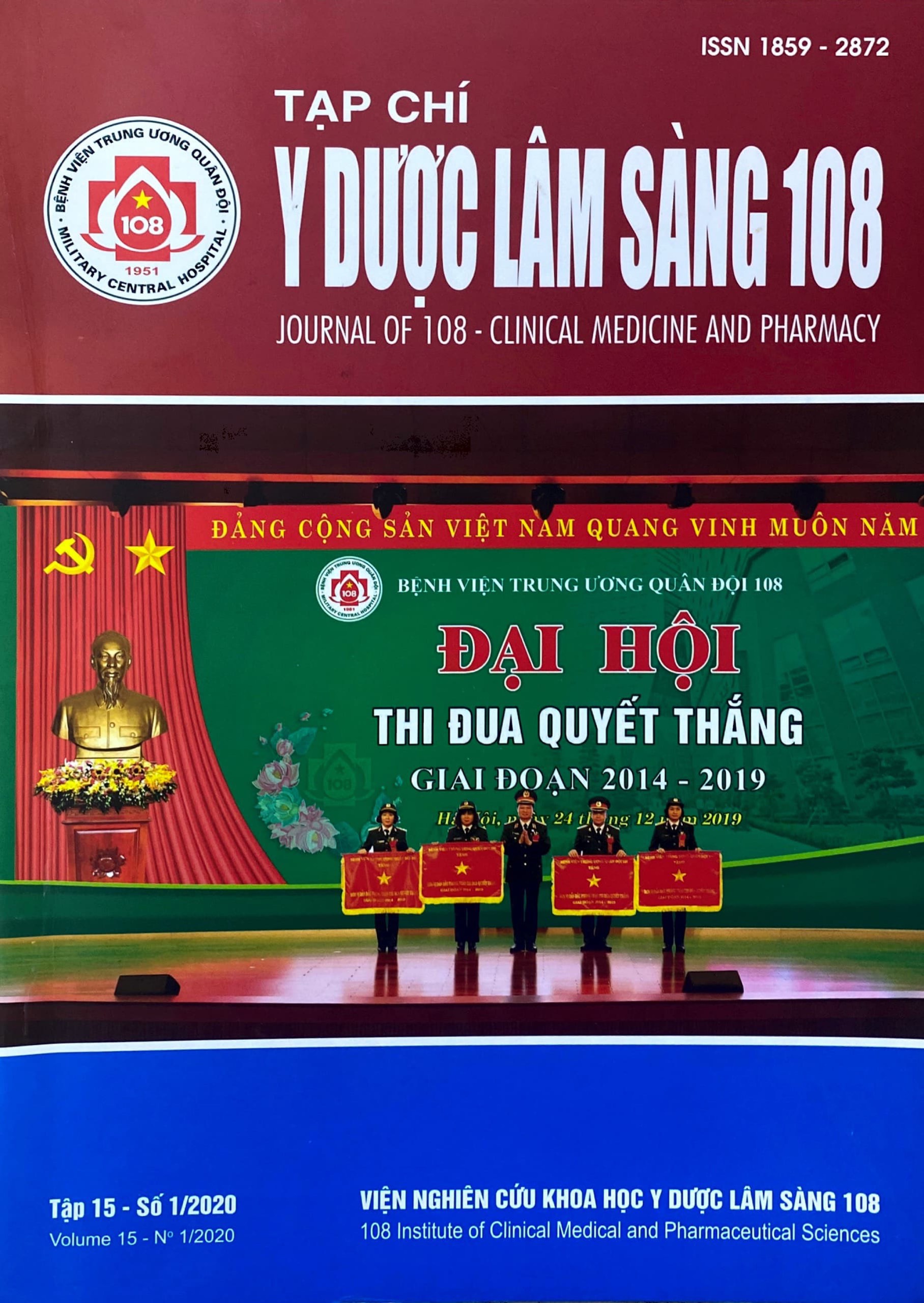Study on changes in WBC, K+ concentration and pH level in frozen red blood cell package before and after deglycerolization
Main Article Content
Keywords
Abstract
Objective: To evaluate the change in white blood cell, potassium concentration and pH level in frozen red cell package (FRCP) at before deglycerolized, immediate time after deglycerolized (T0), 7 days post-deglycerolized (T7), 14 days post-deglycerolized (T14). Subject and method: We conducted a prospective, cross-sectional study on 32 frozen red blood cell units which were cryopreserved with high glycerol concentration (40%) at temperature of below -65oC from December of 2017 and were deglycerolized from June to August of 2019 at Hematology and Blood Transfusion Center, 103 Military Hospital. Result: WBC, that was 3.47 ± 1.33G/l in FRCP, were 0.060 ± 0.019G/l, 0.058 ± 0.022G/l and 0.055 ± 0.024G/l at T0, T7 and T14 respectively. Deglycerolization omitted 98.68% of WBC unchanged during storage time after deglycerolization. Average of K+ concentration level, that was 4.94 ± 0.76mmol/l at before deglycerolized, were 1.21 ± 0.39mmol/l, 11.73 ± 2.41mmol/l and 17.55 ± 3.00mmol/l, at T0, T7 and T14 respectively. K+ concentration increased significantly stastically during storage time after deglycerolization (p<0.01), T0, T7 and T14 pH level were 6.65 ± 0.027, 6.55 ± 0.044 and 6.47 ± 0.046, respectively. pH statistically decreased during storage time after deglycerol. Conclusion: Deglycerolization omitted almost of WBC in frozen red blood cell package. pH level decreased steadily and K+ concentration increased gradually during storage time after deglycerolization.
Article Details
References
2. Bohoněk M, Petráš M, Turek I et al (2016) Quality evaluation of frozen apheresis red blood cell storage with 21-day postthaw storage in additive solution 3 and saline-adenine-glucose-mannitol: Biochemical and chromium-51 recovery measures. Transfusion 50(5): 1007-1013.
3. Bohoněk M, Petráš M, Turek I et al (2016) In vitro parameters of cryopreserved leucodepleted and non-leucodepleted red blood cells collected by apheresis or from whole blood and stored in AS-3 for 21 days after thawing. Blood Transfus 12(1): 199-203.
4. Chang AL, Hoehn RS, Jernigan P et al (2016) Previous cryopreservation alters the natural history of the red blood cell storage lesion. Shock 46(3-1): 89-95.
5. Fung MK, Grossma BJ, Hillyer CD et al (2014) Technical manual 18th edn. American Association of Blood Banks, United States.
6. Antwi-Baffour S, Jonathan KA, Felix Tsyawo RK et al (2019) A study of the change in sodium and potassium Ion concentrations in stored donor blood and their effect on electrolyte balance of recipients. Hindawi BioMed Research International: 5.
7. Valeri CR, Ragno G, Pivacek LE et al (2000) An experiment with glycerol-frozen red blood cells stored at -80 degrees C for up to 37 years. Vox Sang 79(3): 168-174.
8. Valeri CR, Srey R, Tilahun D et al (2015) The in vitro quality of red blood cells frozen with 40 percent (wt/vol) glycerol at -80 degrees C for 14 years, deglycerolized with the Haemonetics ACP 215, and stored at 4 degrees C in additive solution-1 or additive solution-3 for up to 3 weeks. Transfusion 44(7): 990-995.
 ISSN: 1859 - 2872
ISSN: 1859 - 2872
